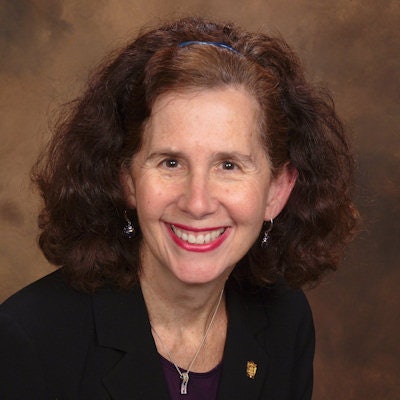
When Doctor A sells his practice to Group B, the new owners may have their own set of policies and procedures. But, what happens when the office you have been working at for the past 20 years has been sold to a corporate-style practice group? Routines and expectations of your patients are changed.
One example of a change in practice is that the new owners may require all new patients to have periodontal and restorative charting. This is standard of care. But for the most part, new patient exams are usually given a different time parameter than a routine preventive appointment. In this situation, a new patient to the practice would have time scheduled for both a hygiene appointment and a separate examination outside of the hygiene treatment room.
Within an hour
 Sheri B. Doniger, DDS.
Sheri B. Doniger, DDS.In some newly merged practices, however, a patient who was previously associated with the practice needs to have periodontal and restorative charting done, following the new owner's protocol. But because they are affiliated, they are not given the same amount of time for their appointment. This means the hygienist needs to do periodontal and restorative charting, take images if called for, and complete the routine recare procedures in an hour.
This requirement may cause the hygienist to speed up the patient-care process to acquire these data points and provide preventive care. This also does not account for the time spent updating or creating new chart information in the practice's patient records system. This often occurs on the hygienist's own time, sometimes after hours.
This example is being repeated throughout the U.S. Small, private dental practices are being sold to larger practice groups, either with or without corporate affiliation. Some of these new practice groups tend to be more focused on the production than the patient relationship. Other practices will still maintain the same focus. All of this depends on the practice's mission and vision.
What to do
So, what to do? On occasion, when practices are merged, there is a bit of navigation to learn new systems and preferences. This will happen if you are a merging dentist or a hygienist.
“There also needs to be open communication between the new practice and the integrated practice to understand the existing patient needs.”
Open, honest communication is key. If hygienists (or the dentist) do not feel as if they have enough time, or their patients are not receiving adequate care, they should speak up at either morning huddles or team meetings.
All the patients from the former practice should be afforded the same courtesy any new patient is given. If a separate 30 or 60 minutes is given to all new patients in the practice, then some of these merged patients may need the same care.
There also needs to be open communication between the new practice and the integrated practice to understand the existing patient needs. The goal is to maintain long-term trust with our patients and provide a new dental home for their care. If not, patients will move away from the new practice and seek out a different practitioner, which will not be beneficial to anyone.
Sheri B. Doniger, DDS, practices clinical dentistry in Lincolnwood, IL. Her book, Practical Practice Solutions in Dentistry, is available on amazon.com. You can reach her at [email protected].
The comments and observations expressed herein do not necessarily reflect the opinions of DrBicuspid.com, nor should they be construed as an endorsement or admonishment of any particular idea, vendor, or organization.



















